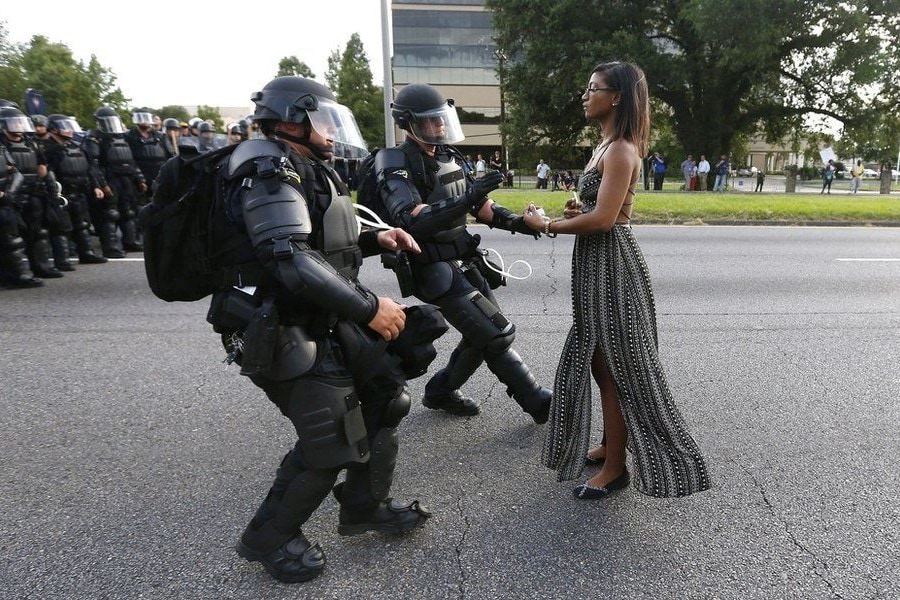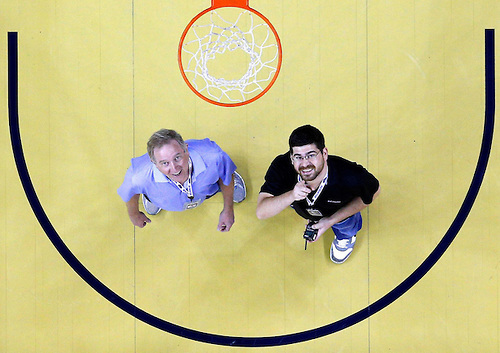Share
Jonathan Bachman on His Iconic Photo
The image is already being compared to some of the best in history. Freelance photographer Jonathan Bachman, armed with a Canon 1Dx and 16-35mm f/...

The image is already being compared to some of the best in history. Freelance photographer Jonathan Bachman, armed with a Canon 1Dx and 16-35mm f/2.8L II USM, set out from New Orleans to cover protests in Baton Rouge over the shooting death of cafeteria worker Philando Castile.
Photo editors have chimed in on what makes the image so successful, and I reached out to a humbled and exhausted Bachman on his photographic process and his thoughts on the image.
When you’re covering a protest, what are you trying to capture through photography?
This was the first protest I’ve covered. I was out there a couple days before [taking this photo] and there were demonstrations, but no clashes with the police officers. I wasn’t sure what I was walking into. The feeling I got over the past few days was very peaceful. You had people picking up trash, directing traffic, and making sure no one was getting harmed. So that was my goal to capture images to tell a story that these are peaceful demonstrations.
You took this photo two days after the killing of five police officers. How did the shooting in Dallas affect your approach to covering the BR protest?
Personally, I felt safe. Reuters was kind enough to send me to hostile training environment earlier this year, and I learned a great amount of info from that training about situational awareness and how to use your judgement to stay safe. I really felt like the crowd wasn’t acting violent. They were throwing anything, They weren’t lighting anything on fire.
What I learned in the training really helped in covering this event. These officers are out in riot gear because of what happened in Dallas. They have to be. You can never tell what’s gonna happen.
If i didn’t feel safe, I would’ve left.
Your photo of the BR protestor has gone viral. What elements of the photo do you think are resonating with the public?
I had no idea it was gonna be the picture. She was standing there, and making her stand. She didn’t say anything to the officers, she was just standing calming. [As I saw it unfolding] I had enough time to get into position. It wasn’t someone who had been already arrested and thrown on the ground.
I knew this would be a photo I would be sending to Reuters.

Jonathan Bachman with his father.
It’s being compared to some of the most iconic photos of the 20th century. How do you feel about that?
I haven’t had time to even process it. [I’m a] total photographer nerd, I just absolutely love photography. And I think the photos [that mine is being compared to] are some of my favorite photos ever taken. I just don’t know how to feel about taking a photo that’s being compared to these beautiful iconic images. It’s a little surreal.
I think [part of the photo’s success is] that she’s there and poses no threat. And I think when people see the photo, they see a woman standing her ground and two officers in full riot gear. But the back story is she was blocking a roadway, and the cops came out and said if you move to the side of the road, we won’t arrest you. But she didn’t move.
She didn’t resist. They took her and detained her. They didn’t throw her on the ground. The event was very representative of the non-violent protest.
Journalists are trained to be neutral, but do you have hopes for how the photo might help shape the dialog around race and police issues that seem to be plaguing the nation?
I haven’t had time to think about that. I was just trying to make a photo that was telling the story that was happening in that exact moment. I didn’t think it would be a photo that is defining a movement.
I’ve seen both videos from MN, i heard the gunshots in Dallas. What is going on. It’s wild. There’s so much pain and anger [right now].
I just love photography. I love trying to make art. It’s nice to be able to make a photo that is a little artsy; not just someone being dragged off or taken to the ground. I’m happy that this was the one that was picked.
This interview has been edited and condensed.


